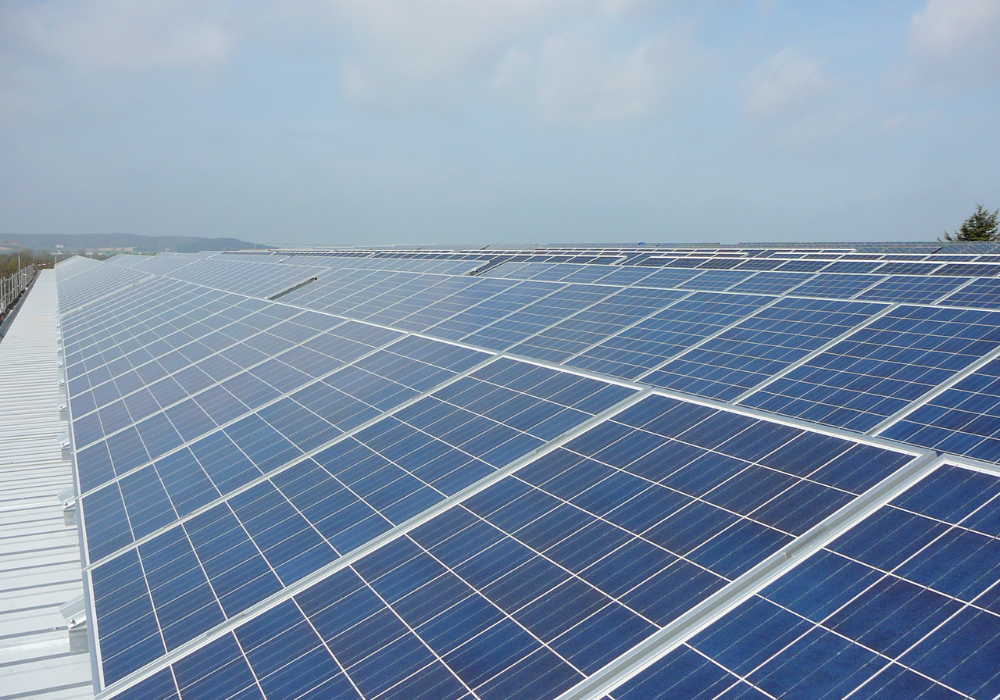
Wind-solar hybrid systems can power the “next wave of renewables growth” in India while generating consistent power at competitive tariffs.
That is according to a report by the Institute for Energy Economics and Financial Analysis (IEEFA) and JMK Research, which expects India’s total wind-solar hybrid capacity to “grow rapidly” to reach nearly 11.7 gigawatts (GW) by 2023.
Fossil fuels currently make up about 75% of the country’s energy mix – placing it as the third-highest emitter in the world behind China and the US.
But Prime Minister Narendra Modi’s government has ramped up its commitments to renewable sources, as the country aims to expand its clean energy capacity from 86.3GW at the beginning of this year to 175GW by 2022 and 450GW by 2030.
Vibhuti Garg, energy economist at the IEEFA and co-author of the report, said that wind-solar hybrid systems is a “new and fast-growing market in India”.
“There is a lot of interest in the potential of wind-solar hybrid generation to better manage the intermittency problem of standalone wind and solar and to make clean power more competitive against traditional thermal plants.”
Wind-solar hybrid systems “well-suited” to meet energy demand in India
A key advantage for wind-solar hybrid systems is that they can produce more consistent power because solar power is produced during the day, while wind power is typically strongest at night.
The report highlights that this “inherent complementary nature” of wind and solar power makes hybrid systems “well-suited” to meet energy demand.
India’s share of total global primary energy demand is set to jump from about 6% in 2019 to 11% by 2040, underpinned by strong population growth and economic development, according to oil major BP’s 2019 energy outlook.

The Indian government’s Ministry of New and Renewable Energy(MNRE) adopted the National Wind-Solar Hybrid Policy in May 2018 to provide a framework for the promotion of large grid-connected wind-solar PV hybrid systems for efficient utilisation of transmission infrastructure and land.
That has been supported by incentives from the MNRE’s Solar Energy Corporation of India (SECI), as well as several state governments in order to try and promote the building of new wind-solar hybrid projects.
The IEEFA’s and JMK’s latest report predicts that total capacity, which currently stands at a measly 148 megawatts (MW), will increase by almost 80 times in the next three years.
Jyoti Gulia, JMK’s founder and co-author of the report, said the SECI has taken the lead on enhancing the capacity by “regularly coming up with large tenders to scale up market growth”.
The government is now also planning to hold renewable energy auctions for round-the-clock and hybrid projects instead of plain solar or wind tenders.
The report predicts that capacity additions for wind-solar hybrid projects will reach nearly 11.7GW over the next three years – marking a compound annual growth rate of 223% from 2020 to 2023 – because of the tenders allotted under various central and state schemes.
Wind-solar hybrid projects without storage have attracted low tariffs
SECI tenders for wind-solar hybrid projects without storage have attracted low tariffs of 2.67 Indian Rupees ($3.70) per kilowatt-hour (kwh), which are comparable to plain solar tariffs.
The report uses a financial model to project tariff trends for a 250MW wind-solar hybrid project under different scenarios.
It shows that when solar and wind are blended at a ratio of 80:20, the levelised tariff is R2.49 ($3.32) per kWh, while a ratio of 50:50 results in a tariff of about R2.57 ($3.43) per kWh.
But when storage in the form of a two-hour battery back-up is added, the levelised tariff increases substantially to R4.59 ($6.12) per kWh.
Gulia said: “Clearly, adding battery storage is not a feasible option at present because it significantly increases project costs and hence the tariffs.
“However, rapidly falling battery prices will make such an addition to these projects viable within a few years, further strengthening grid stability and reliability.”

As well as analysing tariffs and upcoming capacity addition, the report examines national and state policies, regulatory developments, and the risks and challenges associated with wind-solar hybrid technology.
The analysts said developers in the wind-solar hybrid market are grappling with issues such as lower tariffs, policy uncertainty, land constraints, integration challenges, system sizing and lack of experience.
But, as the sector matures, they believe that most of these issues can be addressed by “putting in place more coherent policy and standards”.
Garg said: “State governments including Gujarat, Andhra Pradesh and Rajasthan have come up with their own wind-solar hybrid policies aligned with the National Wind-Solar Hybrid Policy, and more states should follow their example.”
In India, states are able to reserve a certain percentage of their renewable targets for wind-solar hybrid, along with offering waivers and incentives designed to help grow the market.
Wind-solar hybrid systems can help the government meet its future renewables targets
A substantial amount of the nation’s solar and wind power potential is concentrated in the states of Gujarat, Tamil Nadu, Karnataka, Maharashtra and Rajasthan.
The report notes that although wind and solar capacity can be operating at the same or in different locations, co-locating reduces costs related to land, grid connection, hardware and other installation overheads.
It claims the cost of a co-located system is 7% to 8% lower than the cost of a standalone solar system.
Gulia said: “India’s long coastline is endowed with high-speed wind and is also rich in solar energy resources, providing a great opportunity for the wind-solar hybrid industry.”
The analysts believe that wind-solar hybrid systems can “help the government boost renewable energy development” in order to meet its 2020 and 2030 renewables targets, rather than “simply relying on standalone wind and solar”.






